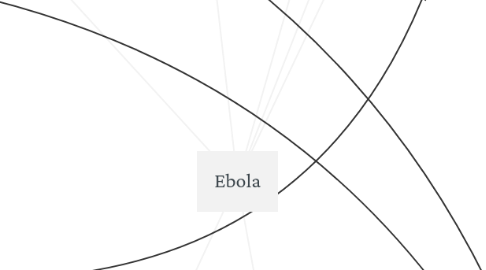
1. Risk Factor
1.1. Genetic
1.1.1. Can be passed from mother to child if child comes in contact with mothers breast milk or other bodily fluids
1.2. Eniromental
1.2.1. Most common contraction
1.2.2. Not contracted through air, water or food
1.2.3. High Risks:
1.2.3.1. Exposure to mucous membranes
1.2.3.2. Exposure to blood
1.2.3.3. Exposure to feces, saliva, sweat, urine, vomit or semen
1.2.3.4. Direct contact with infected individual
1.2.4. Some Risk:
1.2.4.1. Being in close contact with an infected individual
1.2.4.2. Being in a patient-care Ebola treatment unit
1.2.5. Low Risk:
1.2.5.1. Brief contact ( i.e. shaking hands) with infected individual
1.2.5.2. Brief proximity with person showing Ebola symptoms
1.2.5.3. Lab processing of blood or bodily fluids from infected individual while wearing PPE
1.2.6. Lowest risk in those aged 5-19 years old
1.2.7. Highest risk in those aged >29 years old
1.2.8. Medium risk in those aged <2 years old
2. Diagnostics
2.1. Specifically made to be rapid and easily used in countries that lack health infrastructure and trained personnel
2.1.1. Seven have been approved
2.1.1.1. Ebola Rapid Antigen Test Kit-Cadaveric Oral Fluid and Whole Blood
2.1.1.2. Filovirus Screen Kit
2.1.1.3. Antigen Rapid test kit, ReEBOV
2.1.1.4. Ebola Virus Real Time Kit
2.1.1.5. Ebola Test by Cepheid AB
2.1.1.6. Biothreat-E
2.1.1.7. SD Q Line Ebola Zaire Ag
2.2. Cell Cultures used to confirm the presence of the Ebola Virus
2.3. Antibody Detection used to determine current or prior infection
2.4. Protein Antigen Detection used to diagnose acute EVD in patients experiencing symptoms
2.5. Conventional RT-PCR used to detect the virus in acutely ill patients
2.6. Real-Time RT-PCR uses fluorogenic probes to detect the virus
3. Clinical Manifestations
3.1. Pain
3.1.1. Abdominal
3.1.2. Chest
3.1.3. Joints
3.1.4. Muscles
3.2. Whole body
3.2.1. Chills
3.2.2. Dehydration
3.2.3. Fatigue
3.2.4. Fever
3.2.5. Loss of appetite
3.2.6. Malaise
3.2.7. Sweating
4. No FDA approved vaccine or medicine is available
4.1. Symptoms are treated as they appear
4.2. Some interventions, if used early can greatly improve chances of survival
4.2.1. IV fluids and balancing electrolytes
4.2.2. Maintaining oxygen and blood pressure
4.2.3. Treating other infections if they occur
4.3. Recovery depends on immune response
4.3.1. People who recover develop antibodies lasting for 10 years or more
4.4. Even once someone recovers, the virus can last in body fluids such as semen
5. Pathogenesis
5.1. Aggressive pathogen
5.1.1. Contracted by both humans and non human primates
5.1.2. Natural host is unknown
5.1.3. Presents initially as non specific flu-like symptoms
5.1.4. Progresses into severe bleeding and coagulation abnormalities
5.1.5. Eventually infects microvascular endothelial cells
5.1.6. Terminal stage causes diffuse bleeding and hypotension shock
5.1.7. Can be human-human transmission or wildlife-human transmission
5.1.7.1. Traced the outbreak to a two-year old who died in December 2013 in Guinea
6. Incidence
6.1. Slightly high incidence among males than females
6.1.1. Highest incidence among those aged >29 years old and lowest incidence among those aged 5-19 years old
6.2. First identified in 1796 in regions of Sub-Saharan Africa
6.2.1. Fewer then 500 cases reported yearly
6.2.2. No cases reported between 1979 and 1994
6.2.3. Outbreak began in 2014
6.2.3.1. First reported in Guinea in March 2014
6.2.3.1.1. 11,315 people eportedly died from Ebola in Liberia, Guinea, Sierra Leone, Nigeria, the US and Mali
6.2.3.1.2. Total number of reported cases was 28, 637
6.2.3.2. Spread rapidly through West Africa
6.2.3.2.1. Liberia was the hit the worst with more than 10,672 infected
6.2.3.2.2. The last of the countries affected were declared Ebola-free on January 13, 2016
